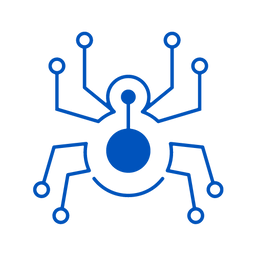Securing the Autonomous Frontier: A CISO's Guide to Protecting Multi-Agent Systems and Building a Specialized Team

As CISOs, our mandate is to protect the organization's digital assets and operations against an ever-evolving threat landscape. We've navigated the complexities of traditional networks, applications, cloud, and mobile. Now, the rise of Agentic AI, specifically Multi-Agent Systems (MAS), presents a new frontier – one characterized by distributed autonomy, dynamic interactions, and emergent behaviors that challenge conventional security paradigms. Ignoring this shift is not an option; it introduces novel risks and significantly expands our attack surface.
Multi-Agent Systems, comprising multiple autonomous agents coordinating to achieve goals, are rapidly moving from research labs to critical business functions – from optimizing supply chains and managing smart city infrastructure to automating customer success and streamlining software development processes. While offering immense potential, their complexity introduces vulnerabilities that demand a specialized security approach. We face amplified issues like trust and bias, coordination failures, and a decrease in visibility that can facilitate evasion. Sample threats unique to this environment include Insecure Communication, the potential for a Blast Radius from a single compromised agent, Identity Spoofing, Prompt Injection Attacks, External Dependencies, Lack of Accountability, Identity Sprawl, and Agent Collusion.
Why Traditional Security Approaches Fall Short
Our established threat modeling methodologies, often designed for single applications or static layered architectures, simply aren't equipped to capture the dynamic interdependencies and emergent risks inherent in MAS. Applying traditional threats component-by-component fails to reveal how the interactions between agents and different system layers can create entirely new attack paths and amplify existing vulnerabilities. We need a framework that accounts for the unique characteristics of agents and their collaborative environments.

Adopting a Structured Approach: The OWASP MAESTRO Framework
This is where the OWASP Agentic Security Initiative's (ASI) MAESTRO (Multi-Agent Environment, Security, Threat, Risk, and Outcome) framework becomes indispensable. MAESTRO is not just another threat list; it's a layered and architectural methodology designed specifically for structured threat modeling in intricate MAS deployments. It serves as a companion to the OWASP ASI threat taxonomy, helping us understand how existing agentic threats manifest in MAS and, crucially, identify new, MAS-specific threat scenarios.
MAESTRO guides our security analysis by breaking down the MAS architecture into seven distinct layers:
- Foundation Model (Layer 1): Concerns the core AI models, their integrity, and potential for manipulation.
- Data Operations (Layer 2): Focuses on vector stores, RAG pipelines, prompt management, and the security of data used by agents.
- Agent Frameworks (Layer 3): Deals with the software or platform enabling agents, including their execution logic, workflow control, and autonomy boundaries.
- Deployment Infrastructure (Layer 4): Encompasses the runtime environment, orchestration, networking, and MLSecOps supporting the agents.
- Evaluation and Observability (Layer 5): Crucial for monitoring, alerting, logging, and human oversight (HITL).
- Security & Compliance (Layer 6): A vertical layer covering access controls, policy enforcement, and regulatory requirements across the system.
- Agent Ecosystem (Layer 7): Addresses interactions between agents, humans, external tools, and other systems.
By analyzing each layer, we can pinpoint vulnerabilities specific to that level. However, the real power of MAESTRO lies in its emphasis on cross-layer risks and emergent behaviors. These are the subtle, complex vulnerabilities that arise from the dynamic interplay between layers and agents. Examples include Cascading Trust Failures, Emergent System-Wide Bias Amplification, Systemic Resource Starvation, Inter-Agent Data Leakage Cascade, Excessive Agency exploiting chained authorizations, Hallucination-Driven Data Corruption, and Privilege Escalation via combined Framework and Infrastructure vulnerabilities. Identifying these requires a framework that maps the entire system, not just isolated components.
The Amplifying Role of Agentic Factors
MAESTRO further compels us to consider four key agentic factors that significantly contribute to and amplify these threats:
- Non-Determinism: The inherent unpredictability of advanced AI models can lead to Model Instability and inconsistent, exploitable behavior. Ambiguity in interaction protocols also contributes.
- Autonomy: Agents' ability to act independently means a compromised or misconfigured agent can execute unintended workflows, runaways (like submitting excessive blockchain transactions), or cause unintended resource consumption autonomously. Autonomy is also a driver of harmful emergent behaviors.
- Agent Identity Management: The complexity of managing identities, credentials, and permissions for numerous agents leads to Identity Sprawl, privilege compromise, and Identity Spoofing. Critical threats like Wallet Key Compromise in blockchain contexts or Smart Contract Vulnerabilities leading to Agent Impersonation are rooted here.
- Agent-to-Agent Communication: The channels agents use to coordinate are targets for poisoning, interception, tampering, and data leakage. Negotiation Hijacking and enabling Agent Collusion are direct communication risks.
These factors aren't just technical details; they are strategic risks that fundamentally change how threats manifest and propagate within MAS. Our security team must understand how Non-Determinism enables threats like inconsistent approvals, how Autonomy can turn minor bugs into costly runaway issues, how poor Identity Management allows for spoofing and privilege escalation, and how insecure Communication facilitates data leakage and poisoning across the ecosystem.
Building and Empowering the Internal Security Team
Securing the autonomous frontier requires a deliberate effort to structure and empower our internal security team. Drawing on the requirements illuminated by the MAESTRO framework and the nature of MAS threats, here are the key areas of focus:
- Develop Specialized Expertise: The team must go beyond traditional AppSec and InfraSec. They need proficiency in AI/ML security (including LLM vulnerabilities, data poisoning, model manipulation) and, specifically, agentic security concepts defined by OWASP ASI and MAESTRO. This includes understanding the implications of the four key agentic factors. Combining knowledge with other taxonomies like MITRE ATT&CK and ATLAS provides comprehensive coverage.
- Embed Structured Threat Modeling: MAESTRO should become a core methodology. Train security architects, developers, and relevant operational staff on its seven layers and cross-layer analysis. Integrate MAESTRO-based threat modeling early and repeatedly within the MAS development and deployment lifecycle, ideally aligning with MLSecOps practices. This isn't a one-off exercise but a continuous process to build formalized and repeatable threat models.
- Strengthen Observability and Incident Response: Layer 5 is non-negotiable. Given the complexity and decreased visibility in MAS, robust logging, monitoring, and anomaly detection are critical. The team needs the capability to detect sophisticated threats like Selective Log Manipulation and understand how to investigate incidents across distributed, non-deterministic systems with potentially poor traceability. Managing the Overwhelming HITL threat also falls under this umbrella.
- Refine Identity and Access Management (IAM) for Agents: MAS introduce significant IAM challenges due to the sheer number of agents and their complex interactions. The team must focus on managing Agent Identity Sprawl, ensuring least privilege is applied to individual agents and their service accounts, and securing agent credentials and keys, especially in environments like blockchain (e.g., Wallet Key Compromise). Secure inter-agent authentication is vital.
- Define and Enforce Agent Governance and Policy: Layer 6 is the policy bedrock. The security team must collaborate with legal and compliance to establish clear policies around agent autonomy boundaries, acceptable tool use, data handling during inter-agent communication (Data Privacy Violations), and response to misaligned or non-deterministic behavior. Mechanisms for Dynamic Policy Enforcement must be secure and reliable.
- Foster Cross-Functional Collaboration: Securing MAS is a shared responsibility. The security team must work hand-in-hand with development, architecture, data science, and operations teams. Threat modeling, designing secure inter-agent communication protocols, and implementing layered defenses require seamless collaboration. For instance, developers need guidance on avoiding Framework Vulnerabilities, while operations needs to secure the Deployment Infrastructure.
- Address Ecosystem Risks: MAS often interact with external tools, APIs, or other MAS. The team must consider the security of these dependencies (External Dependencies), the risks posed by potentially rogue agents or servers in the ecosystem (Rogue Agents, Rogue MCP Server), and the security of protocols enabling interaction, like MCP.
Conclusion
The emergence of Multi-Agent Systems marks a significant evolution in our security responsibilities. The unique characteristics of MAS – their distributed nature, complex interactions, and autonomous agents governed by factors like non-determinism and identity – create a threat landscape that traditional security measures cannot fully address.
By adopting the OWASP MAESTRO framework, we gain a structured, layered methodology to systematically identify and understand these complex vulnerabilities, particularly the cross-layer risks and the impact of the four key agentic factors. For CISOs, applying MAESTRO is not just a technical exercise; it's a strategic imperative that dictates how we must organize, train, and empower our internal security teams.
Our teams must develop specialized expertise, integrate structured threat modeling into the core of MAS development, bolster observability, rethink identity management for autonomous entities, define robust governance, and collaborate closely across technical domains. Only by proactively addressing the unique security challenges illuminated by frameworks like MAESTRO can we confidently navigate the autonomous frontier and ensure our organizations can harness the power of Multi-Agent Systems securely and resiliently.






